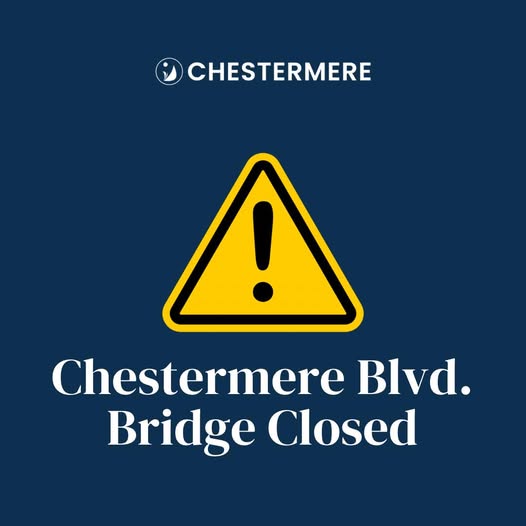Chestermere City Council was advised to not increase the speed limit on Township Road 240 above 60 km/h.
Infrastructure project manager Carrie Stettner recommended that council not increase the speed limit on the road after a review of the implications during the March 15 regular meeting of council.
“We were asked to evaluate if the speed limit could be increased above 60 km/h, to get more traffic through quicker,” Stettner said.
City administration looked at making four lanes of the road, as it will be a major corridor from the City of Calgary, through Chestermere, and into Rocky View County.
“With the timing of the road, there was a number of factors that went into it. It didn’t make sense at the time to design a road to a rural standard when the ultimate is urban,” Stettner said.
A previous development outline plan incorporated multiple intersections into the road, which was the rationale for designing the corridor for 60 km/h.
Administration was directed to review if the speed limit could be increased to 80 km/h.
“The short answer is probably not without accepting some risk or additional cost,” Stettner said. “If the speed is increased, the city could take that liability onto the city. It’s not my recommendation or the recommendation of the engineers, but ultimately, it’s with council.”
The most significant obstacles to increasing the speed include the clear zone of the road not being efficient for speeds over 60 km/h, the AltaLink power poles that don’t meet speeds above 70 km/h, and the Western Irrigation District (WID) crossing.
When the WID crossing was installed, originally it was a rural road, the new structure that was installed was larger due to requirements that WID had, to be above their flood service level, Stettner explained to council.
“The crossing that is there now is much higher than the existing one. The lines at the bridge don’t meet the specifications above 60 km/h, the guard rails were designed at 60 km/h, there would have to be some modifications in order to meet the specifications,” Stettner said.
Administration looked into changing the speed to 70 km/h and were told that a high-speed corridor is typically designed at 10 kilometres over the posted speed limit.
“If we were to post the speed at 70 km/h, we would have to have it designed to 80 km/h, it still doesn’t meet the criteria to increase the posted speed,” Stettner said. “Unfortunately, the recommendation is based on the technical review for the speed to remain at 60 km/h.”
The WID crossing issue could be deal with, however, administration expected the city would not want to invest in moving the AltaLink power poles.
“It almost sounds like we built Township Road 240 too early and designed it for that speed. When we built it out and designed it, we designed it at a lower speed, so it inhibits residents right now until we ultimately build-out,” Councillor Stephen Hanley said. “The key component here is what’s the risk, the residents want to understand why they are being slowed down.”
Hanley believes that if council can clarify the risk to residents, they would feel better in understanding the situation.
“In the meantime, it’s operating how it’s designed, so there’s no risk right now,” Hanley said. “Residents’ concern is they want to go faster, but going faster involves a risk, and we have to clearly define and communicate that.”









